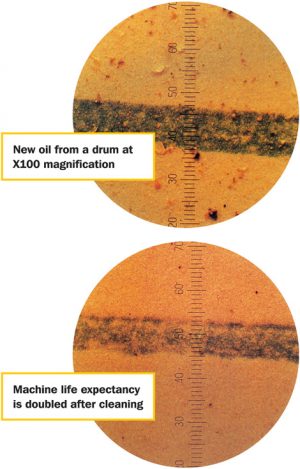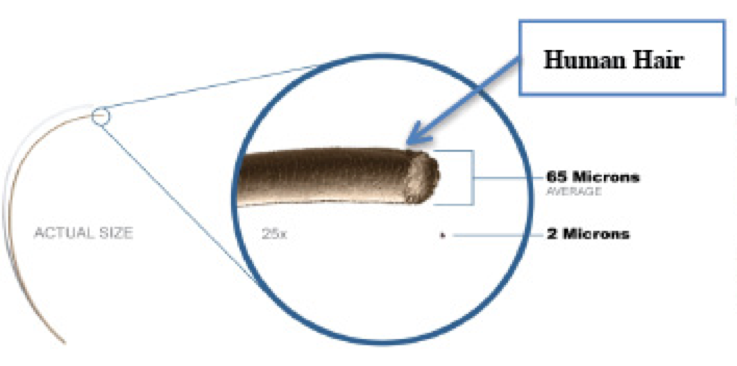Surprisingly New Oil contains harmful contaminants, even though it may look clean.
Oil suppliers focus on the performance speciation’s of their oil, the End-User needs to focus on the performance specifications set by their equipment manufacturer. These specifications are very different.
Typical new ol could contain up to 32 times more particles then the required cleanliness specification for equipment performance

With increasing expenses, increasing demands on equipment and output, operators must take advantage of every percentage point available for increasing performance and maximising component life.
Filtering new oil is a ‘Low Cost’ easy first step.

Particles that do the most damage to mechanical equipment, particularly hydraulics, are in the 1 to 10micron range.
To put this into perspective, a single human hair is approx. 60 microns. Most people can’t see something that is smaller than 40microns!
How does new oil get contaminated?
Collecting contaminants during production and transportation, bulk oil can be transferred from production to storage to trucks to containers to drums multiple times before arriving on site.
New Oil is one of worst sources of particulate contamination ingression in fluid systems, because most operators assume new oil is clean, it is freely introduced into the system.
A common cleanliness code for new oil is 22/21/18 or higher, which is NOT suitable for most hydraulic and lubrication equipment which operate on finer tolerances of 16/14/11 or cleaner.
Learn more about ISO codes in Filtration Basics OR get advice asap from our FluidCare™ experts call 1300 883 995 or info@fpes.net.au

